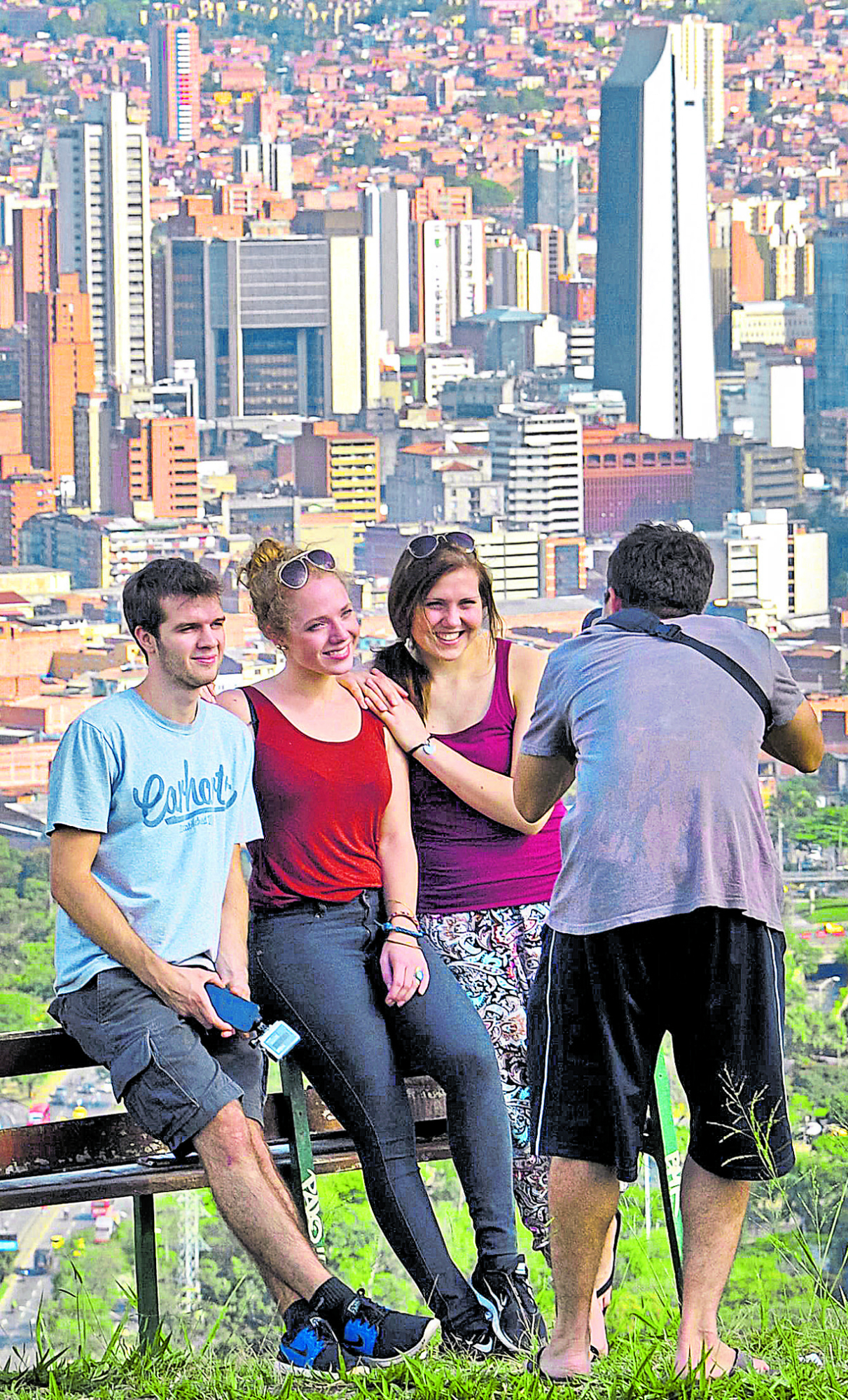Colombia projects 7.2 million foreign tourists this year, the highest number in history.

At the 29th Anato National Congress of Travel and Tourism Agencies, held in Medellín on August 21-22, the association highlighted a significant milestone: foreign currency generated from tourism now exceeds that generated by coffee and coal, and represents 86 percent of the total income from oil and its derivatives.
Regarding this situation, Clara Inés Sánchez, dean of the Faculty of Tourism and Hotel Business Administration at the Externado University of Colombia, explained to EL TIEMPO that the fact that tourism revenue is at the top of the national economy implies an increase in the arrival of international tourists and, consequently, an increase in tourism spending.
"This reflects greater confidence in the destination, as well as a stronger installed capacity to receive visitors," he noted.
Although tourism sector growth is not advancing at the same pace as in 2024, when Colombia received 6.9 million foreign visitors (13.3 percent compared to 2023), the trend continues to be positive in 2025, with a national increase of 0.02 percent. As of June of this year, the country has received a total of 3.3 million international tourists.
“Tourism continues on a positive path. More than 300 million international tourists traveled worldwide between January and March 2025, which represents 14 million more than the same period in 2024, i.e., an increase of 5 percent,” the association noted.
Tourism in figures By the end of 2024, Colombia had established itself as the most visited country in Latin America, with a 13.3 percent increase compared to 2023, surpassing Brazil, Argentina, Chile, and Uruguay. Based on these figures, it is projected that by the end of 2025 the country could reach 7.2 million foreign visitors, representing a growth of almost 5 percent.
Regarding passenger traffic, a 0.4 percent increase is expected by the end of this year, while domestic tourism remains similar to its 2024 peak, with 1.6 million travelers. Travel agencies are forecasting a sales increase of between 5 and 7 percent.
In inbound tourism, this year, the United States ranks first with 24.3 percent participation during the first half of the year, followed by Venezuela (12.9 percent), Mexico (7.3 percent), Ecuador (6.1 percent), and Peru (5.1 percent).
The main reasons for travel in the first quarter were vacation, recreation, or leisure (54.7 percent), followed by visiting family or friends (29.9 percent). Medical tourism has also shown significant growth, with an average spending per visitor of $3,600, well above the overall average for the leisure segment of $1,753.
However, Anato warned of a 12.4 percent decline in the arrival of Colombians living abroad. "They are not coming at the same rate as before," the union noted, which represents a decline in a segment that has historically been key to the country's inbound tourism.
Colombians, for their part, travel primarily to the United States (29 percent), Spain (14.7 percent), Panama (10.7 percent), Mexico (7.7 percent), and the Dominican Republic (5.9 percent), mostly for vacation and recreation (44.9 percent). Regarding average spending, the highest category is education and training, at $11,366.
The union also highlighted the air connectivity figures. In July alone, international passenger traffic grew 12.5 percent compared to 2024, while domestic traffic increased 4.7 percent. Last year, the country closed with 56.5 million passengers transported, of which almost 60 percent were on domestic flights.
In the first half of 2025, 27.4 million passengers were transported, representing a 2.3 percent increase compared to the same period last year.

As of June of this year, the country has received a total of 3.3 million international tourists. Photo: Ministry of Commerce
Although tourism has shown progress, Anato warns that security remains a key factor in the reactivation of tourism. In this regard, he called for the reactivation of the National Tourism Security Council.
Clara Inés Sánchez, for her part, indicated that there are other key challenges that must be considered. On the one hand, she mentioned that El Dorado Airport has become a hub for the region; however, it is currently falling short of demand.
"If there's no intervention to expand air operations, tourism could stagnate. While we have other airports with international operations, they don't have the same capacity as El Dorado," he warned.
On the other hand, the expert pointed to the growth of tourist accommodation as a concern, not only for the sector but also for local communities. She warned about its impact on phenomena such as gentrification, due to the lack of oversight. She also emphasized the importance of regulating this type of business.
According to Anato, timely access to sector resources is a key challenge. “Since 2020, the Ministry of Finance has withheld tourism tax revenue and only disbursed funds to Fontur when it fully justifies their use. Starting in 2024, pressures on the National General Budget have further delayed these disbursements, affecting the fund's operations, including payroll and supplier payments,” the union stated.
In light of this, the need to develop a priority map to guide investment strategically, differentiated by territory and with a focus on competitiveness, sustainability, and decentralization was emphasized.

The Tourism Cluster prioritized the strategic segments of health and wellness tourism. Photo: Esneyder Gutiérrez
“At ANATO, we reiterate our full willingness to work collaboratively with the National Government, because we firmly believe in the importance of ongoing collaboration between the public and private sectors to advance Colombia's consolidation as a competitive, sustainable, and inclusive tourism destination. We will continue to develop training initiatives such as Transformando Destinos (Transforming Destinations), with the goal of improving competitiveness in the PDET territories, strengthening the skills of tourism service providers and popular economy stakeholders linked to the sector chain,” the organization concluded.
ANGIE TATIANA RODRÍGUEZ - TRAVEL EDITORIAL
eltiempo





